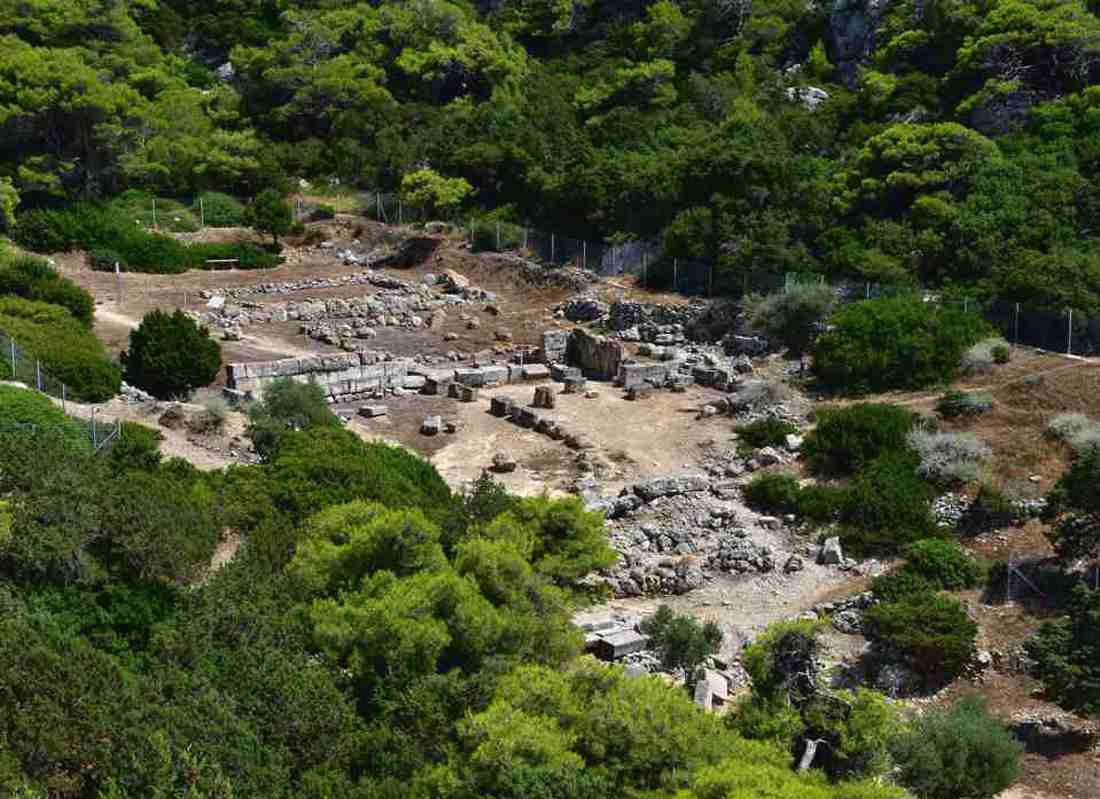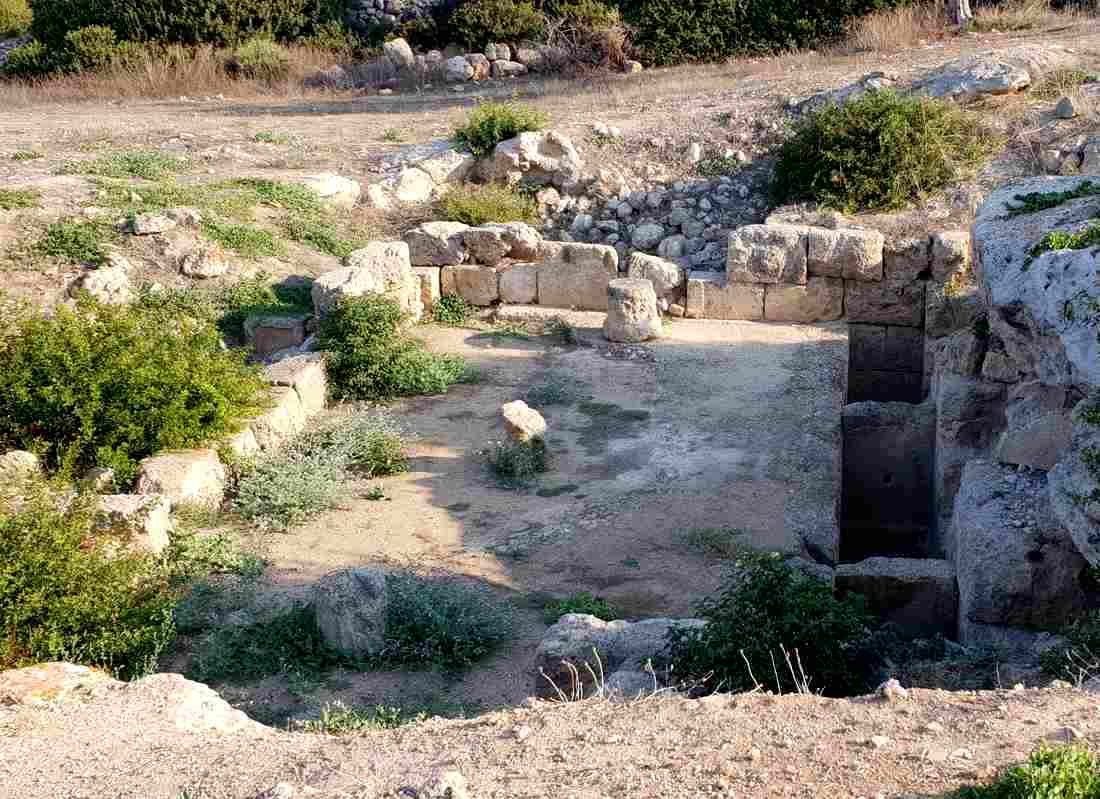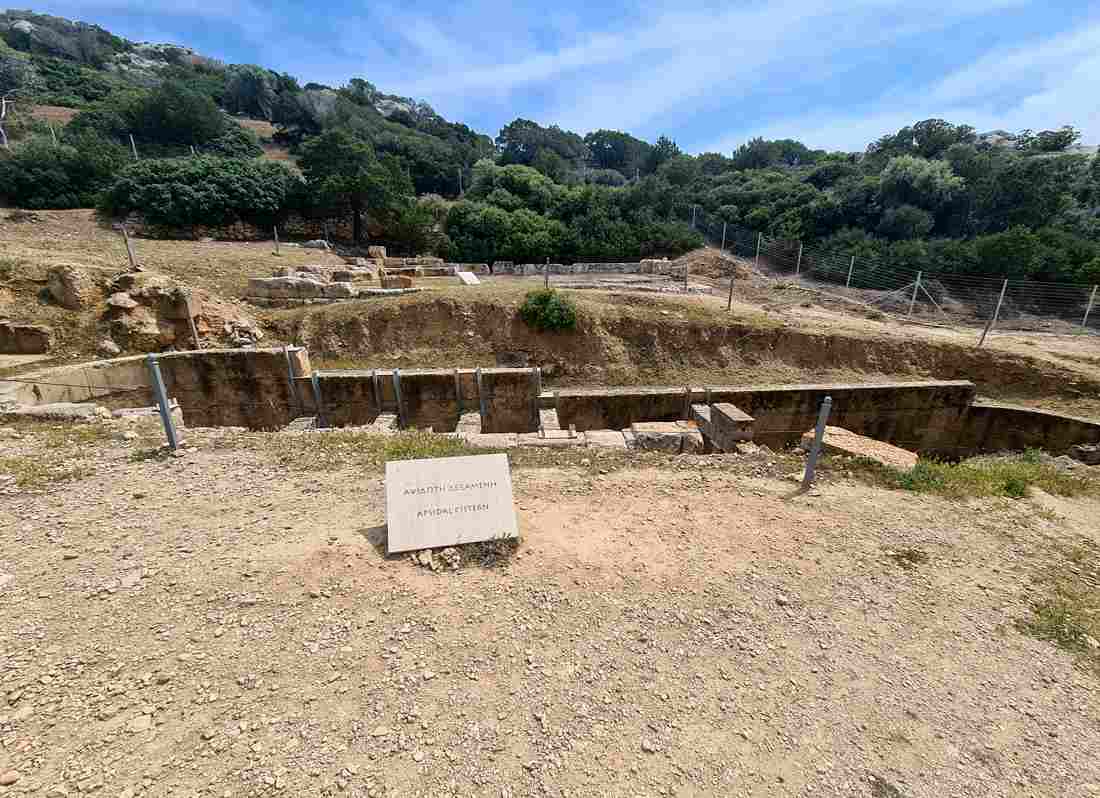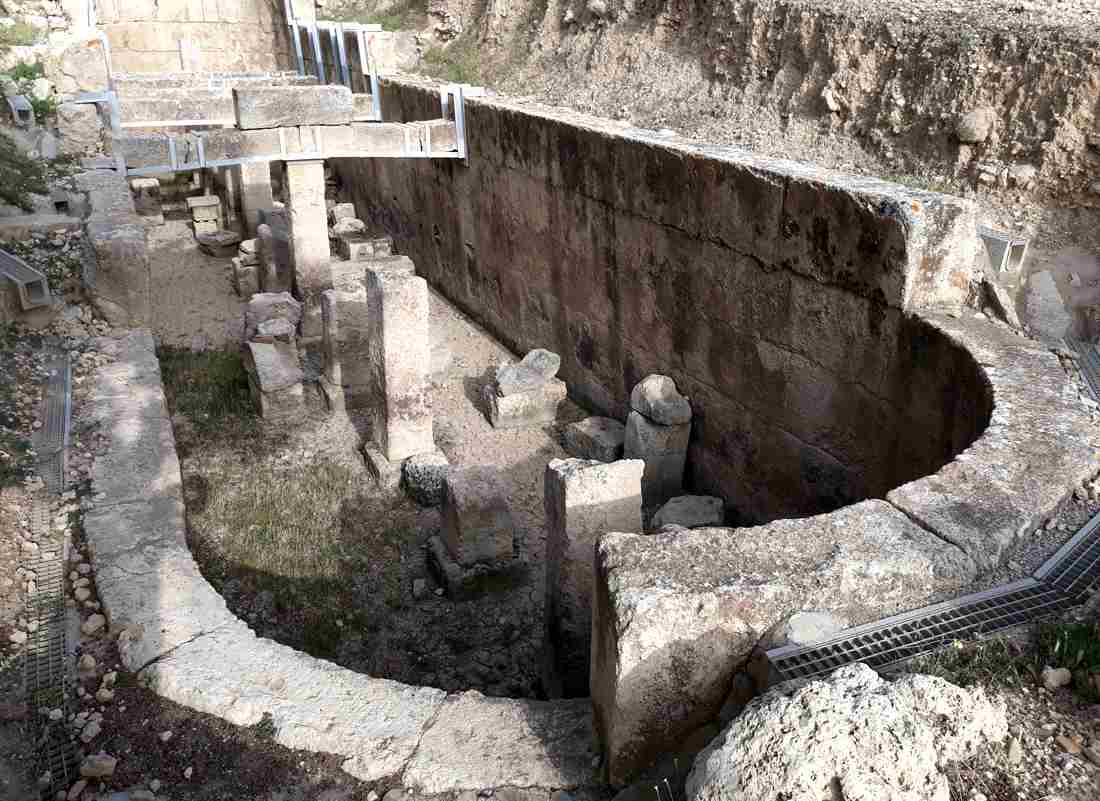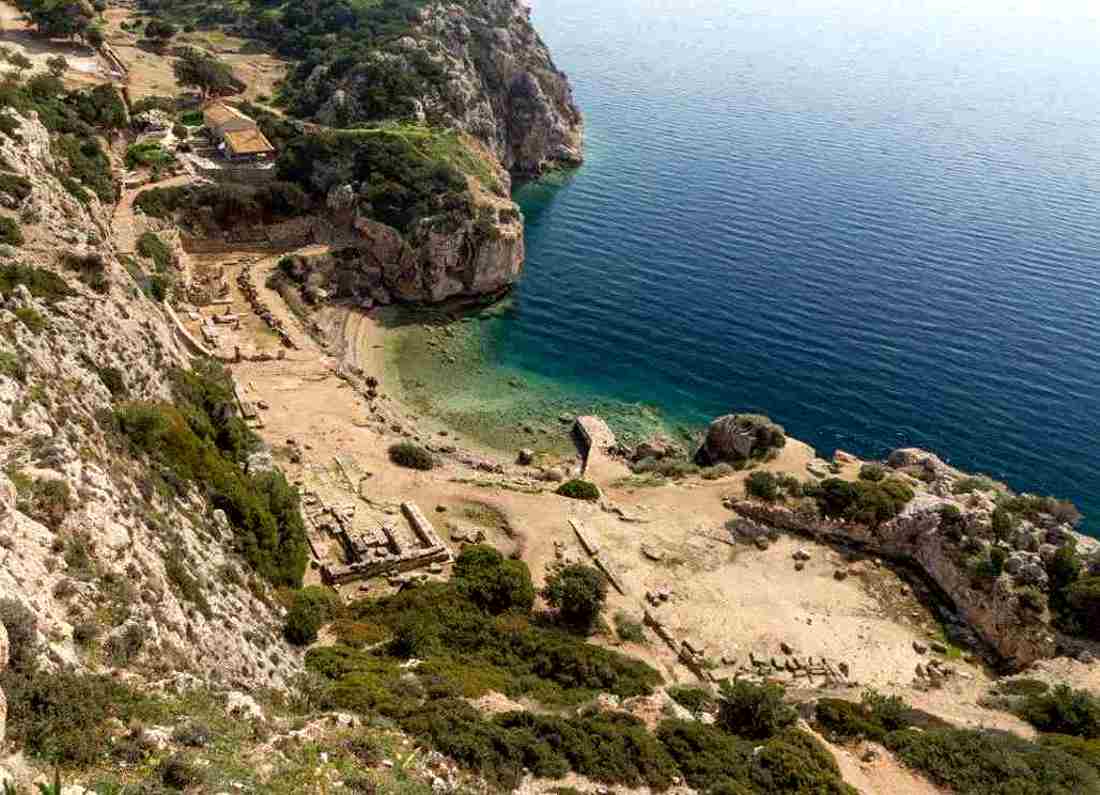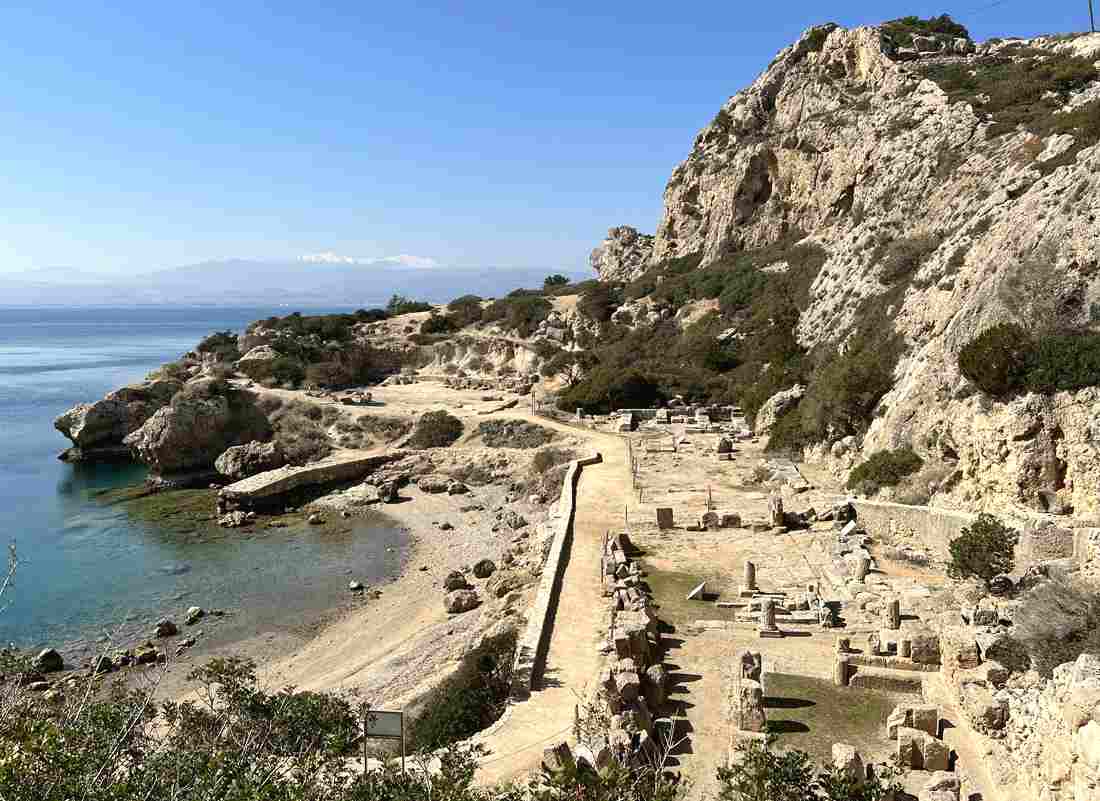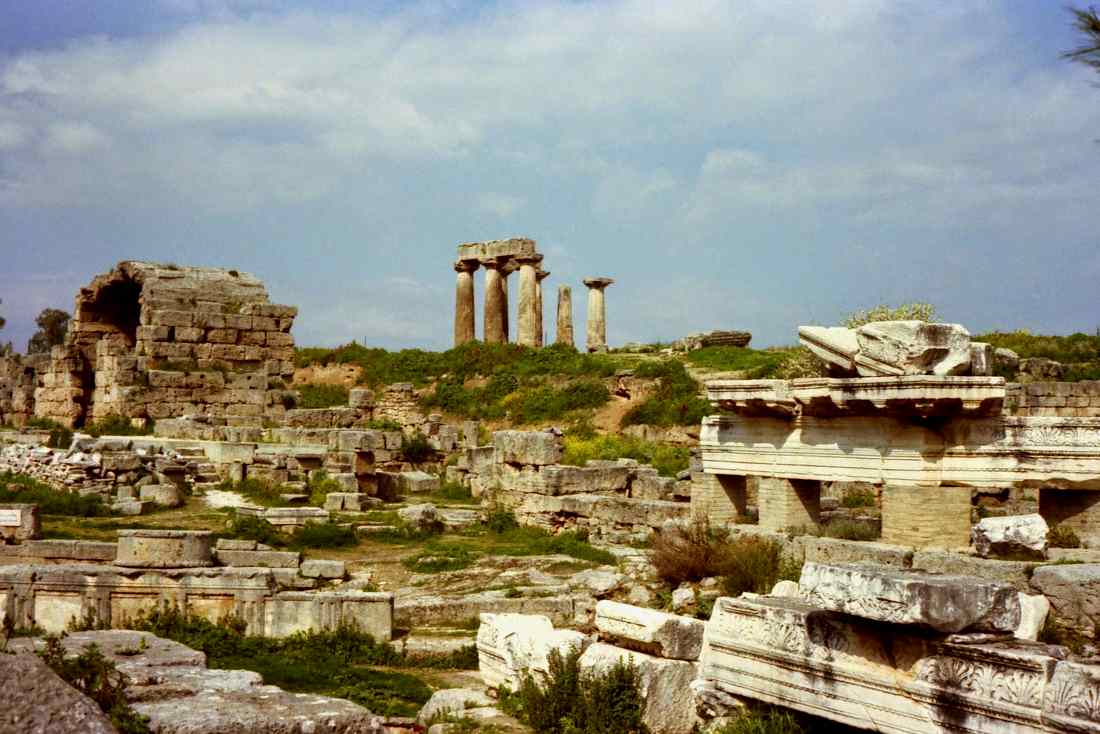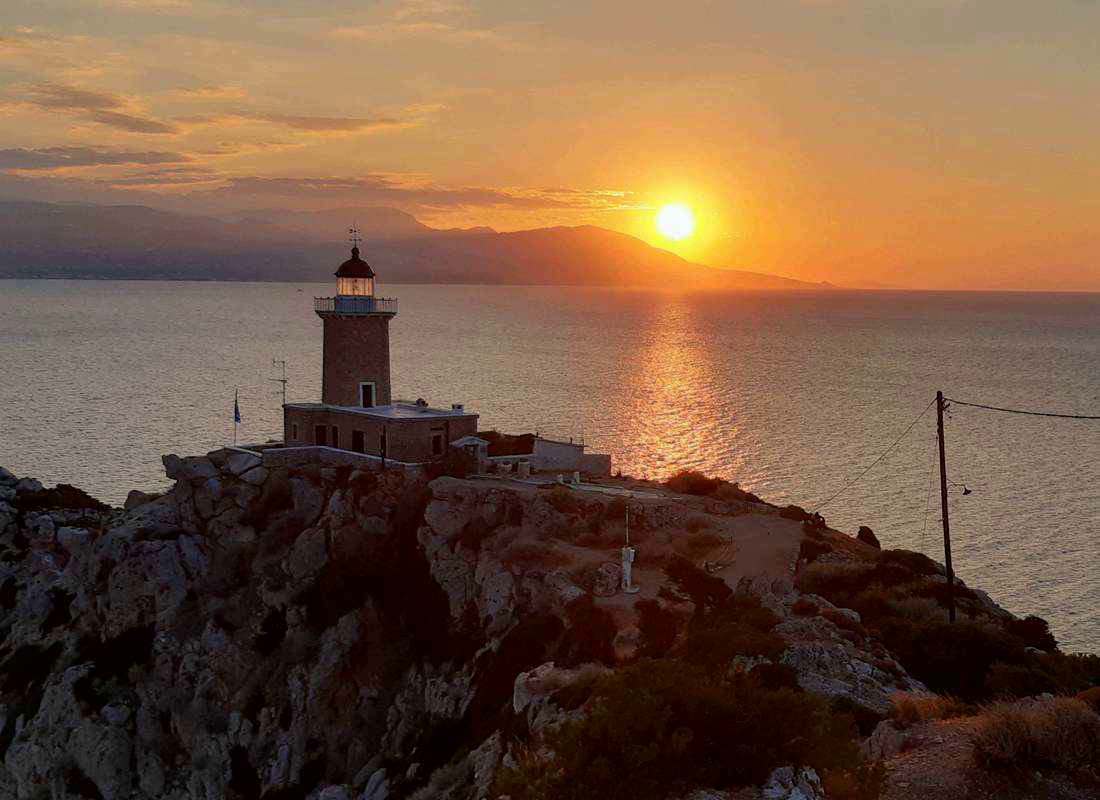
Herayon Perachora
The Heraion of Perachora is located in a small bay on the Gulf of Corinth. Remains of a number of structures have been found in the temple, including colonnades, a large tank, and refectory rooms. The temple consists of two parts, although recently it was assumed that there were two sanctuaries: Hera Akraia (on the edge) and Hera Limenia (in the harbor), careful analysis of the site has led scholars to the conclusion that there is only one temple dedicated to Hera Akraia-Limenia. The cult became established around 800 b.c., where the first apse of the temple of Hera was erected, but nothing survives of it. In the 6th century b.c. a new temple was erected a little to the west.
It was an example of Doric architecture with dimensions of 10 by 31 meters. In the east was a rectangular altar decorated with triglyphs. In the 4th century b.c. the space around the altar was supplemented with eight Ionic columns, on which they placed a canopy that protected the priests and the fire from strong winds. What was taken for the sanctuary of Hera Limenia - archaic rectangular building after a detailed and systematic study turned out to be a refectory for pilgrims. The reservoir with double arches is located in the east. A stone drain and another small sump for water were found to the northeast of the reservoir.
The Church of St. John, which originally stood on the site of the geometric temple, was discovered later during excavations. On the eastern edge, fragments of several retaining walls (5th - 4th century b.c), remains of a staircase and large artificial cavities, conventionally called a sacred reservoir, can be seen slightly below. In the 4th century b.c., about 200 glass vessels used in rituals were found during the excavation of a large water tank. The structure held a water well and is an interesting example of an ancient water catchment and storage area. Also excavated were a clay kiln, remains of pottery, parts of friezes, a lime kiln (necessary for construction) with traces of fire on the stones.
Guest reviews
You may also be interested in similar information
Ancient village of Isthmia
Corinth, Greece
Lighthouse Melagavi
Corinth, Greece


